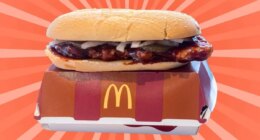The product recommendations in this post are recommendations by the writer and/or expert(s)
interviewed and do not contain affiliate links. Meaning: If you use these links to buy
something, we will not earn a commission.
When you need to feed a crowd on a budget, Sam’s Club has you covered. The big-box retailer is known for its array of inexpensive products in commodious portions—and no section of the store makes things quite so convenient as the freezer case. Both Sam’s Club’s proprietary Member’s Mark brand and other manufacturers offer frozen foods that make breakfasts, lunches, dinners, and snacks a snap.
But even though frozen foods at Sam’s Club can be your ticket to simple, heat-able meals, they’re not all a slam dunk for health. To enhance flavor and preserve foods for their long journey of freezing, many manufacturers add copious amounts of sodium, fat, and additives. Dietitians say some are worth tossing in your basket, while others you can leave on the shelf. Here are registered dietitians’ top 12 recommendations for the yay’s and nay’s of frozen foods at Sam’s Club. Read on, and for more, don’t miss 6 Low-Quality Sam’s Club Items You Should Never Buy, Say Customers.
7 Best Frozen Foods at Sam’s Club
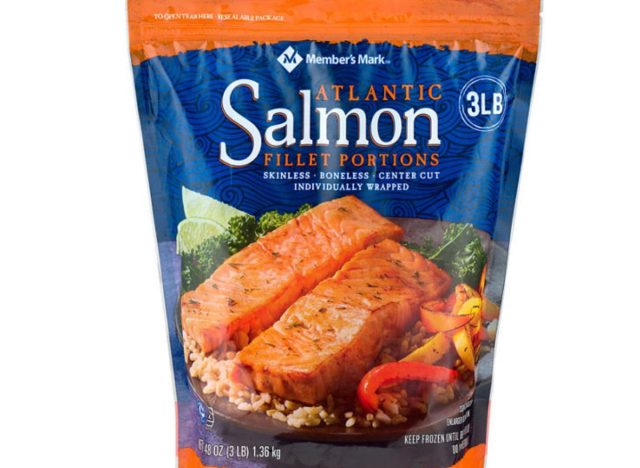

Per 4-ounce serving: 230 calories, 15 g fat (3.5 g saturated fat), 70 mg sodium, 0 g carbs (0 g fiber, 0 g sugar), 23 g protein
Member’s Mark Atlantic frozen salmon swims to the top of our list for its quick prep time. “The salmon fillets thaw quickly and make for delicious and fast high-protein meals in minutes,” says Bianca Tamburello, RDN, on behalf of the Chilean Salmon Marketing Council. The fatty fish cooks in just 16-20 minutes when defrosted (though you can pop it straight from the freezer into the oven, too).
Then, of course, there’s salmon’s excellent balance of nutrients. “As a registered dietitian, I love that the Member’s Mark salmon fillets are from Chile, making them particularly high in beneficial omega-3 fats and low-mercury,” Tamburello says.
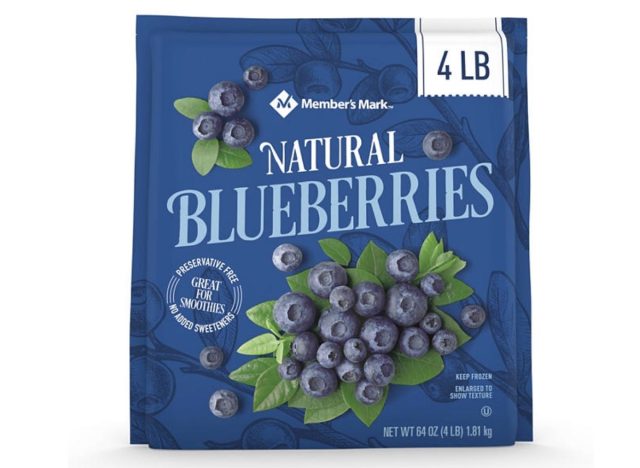

Per 1 cup: 80 calories, 1 g fat (0 g saturated fat), 0 mg sodium, 19 g carbs (4 g fiber, 13 g sugar), <1 g protein
“I think everyone should keep a bag of frozen fruit in their freezer for smoothies, chia jam, or oatmeal toppings,” says gut health dietitian Amanda Sauceda, RDN. “Blueberries are my go-to.” Not only can the sweet berries find their way into innumerable recipes, but they’re also packed with fiber and antioxidants for health benefits galore.
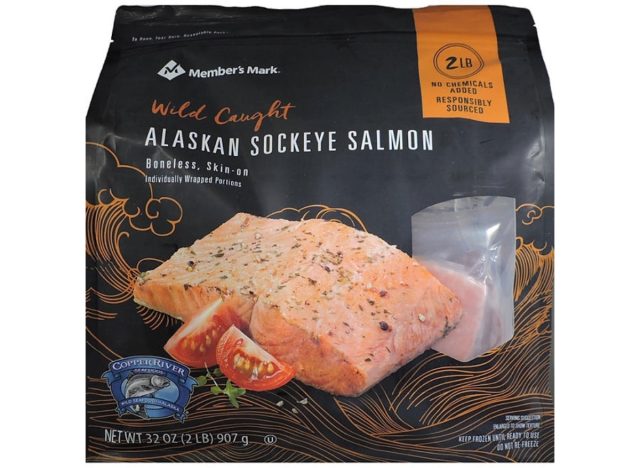

Per fillet (170 g): 220 calories, 8 g fat (1.5 g saturated fat), 135 mg sodium, 0 g carbs (0 g fiber, 0 g sugar), 38 g protein
Salmon wins again—this time hailing from the northern side of the globe. “Farm-raising salmon is illegal in Alaska, so this salmon is definitely wild-caught and packed with nutrients from its natural ocean diet. It’s high in omega-3 fats and oh, so tasty!” says Kristen White, RDN, CLT, of The Food Sensitivity Dietitian. With no additives, the Member’s Mark Alaskan sockeye salmon is a blank canvas for all your favorite fish recipes.
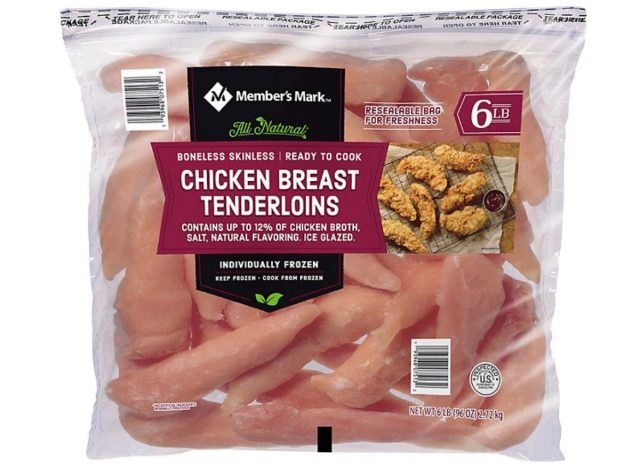

Per 4-ounce serving: 100 calories, 0.5 g fat (0 g saturated fat), 180 mg sodium, 0 g carbs (0 g fiber, 0 g sugar), 23 g protein
What’s for dinner? Stocking up on all-purpose chicken tenderloins means you’ll never be caught without an answer. “Having a frozen protein in your freezer is perfect for busy nights when you need a quick dinner. The tenderloins can be cooked on the stovetop from frozen in just about 20 minutes,” Sauceda says. Her easy dinner recommendation: pair the cooked tenders with a side salad, simple vegetable, or mac and cheese.
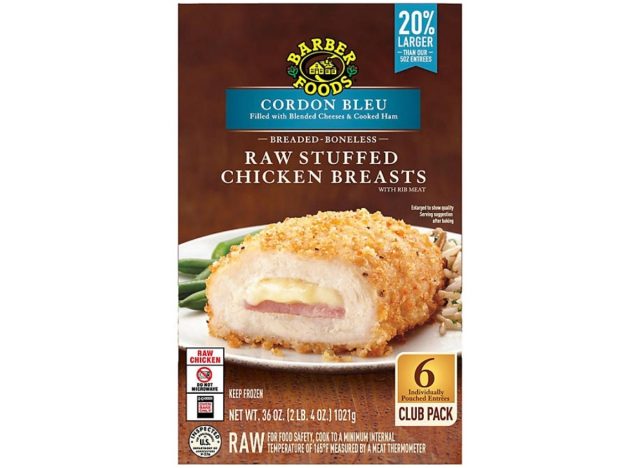

Per piece (168 g): 340 calories, 16 g fat (5 g saturated fat), 540 mg sodium, 19 g carbs (1 g fiber, 1 g sugar), 31 g protein
For a more indulgent chicken dinner, check out Barber’s Breaded Boneless Chicken Breast, Cordon Bleu. Wan Na Chun, MPH, RD, CPT of One Pot Wellness says it’s a healthier choice than lots of other frozen meals for its high protein count (31 grams per serving) and its surprisingly low sodium. “Compared to other frozen meals, [this meal] is relatively low in sodium, with only 540 milligrams per serving,” she says. “This frozen meal would go great with some steamed vegetables and whole grains such as quinoa or brown rice for a nutritious meal.”
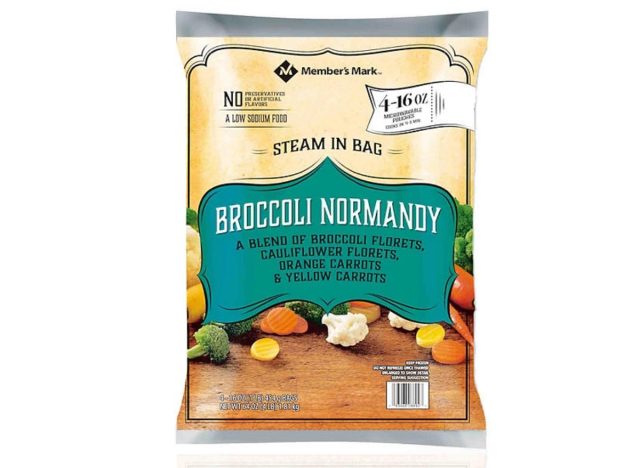

Per 1 cup: 30 calories, 0 g fat (0 g saturated fat), 15 mg sodium, 5 g carbs (2 g fiber, 4 g sugar), 2 g protein
READ RELATED: 5 Looming Grocery Shortages You Need to Know About
What’s not to like about a healthy blend of frozen veggies? Member’s Mark’s frozen broccoli Normandy blend elevates the usual broccoli with an intriguing mix of cauliflower and orange and yellow carrots. Considering that these veggies have no additives or preservatives (and an entire cup nets you just 30 calories), you can feel good about popping them into casseroles, soups, pastas, and other weeknight meals.
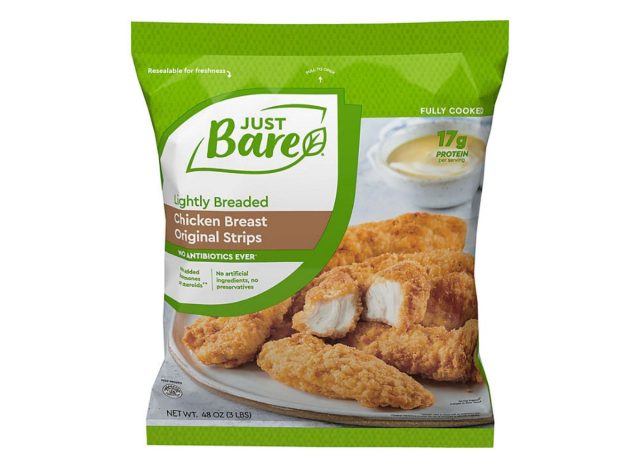

Per 2 pieces (93 g): 170 calories, 6 g fat (1 g saturated fat), 620 mg sodium, 11 g carbs (0 g fiber, 2 g sugar), 17 g protein
“One Sam’s Club item that I always keep stocked in my freezer is Just Bare Chicken Strips,” says Atlanta-based dietitian Jessie Hulsey, RD, LD. Unlike plain tenderloins, these chicken strips come pre-breaded and lightly seasoned, making them an easy add-on for salads, pasta, sandwiches, and more. Plus, they’re not short on protein. “Packed with 17 grams of protein per two-piece serving, these chicken strips are a good source of lean protein that will leave you satisfied,” Hulsey says.
5 Worst Frozen Foods at Sam’s Club
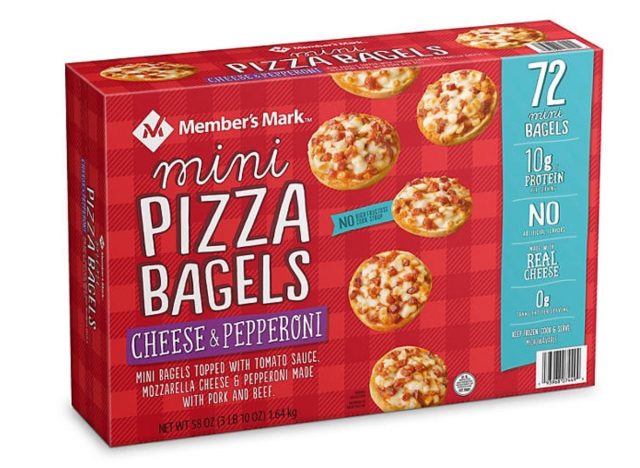

Per 4 pieces: 210 calories, 7 g fat (3 g saturated fat), 500 mg sodium, 27 g carbs (1 g fiber, 4 g sugar), 10 g protein
One look at these pizza bagels’ lengthy ingredient list tells you they’re a highly processed food. High levels of processing have been linked to health issues like weight gain, heart disease, and cancer.
“With schools back in session, this item may be an easy lunch or after-school snack for the kiddos, however one serving (4 pieces) contains 210 calories, 3 grams of saturated fat, and 500 milligrams of sodium, which, if consumed often, can lead to an increased risk of obesity and heart disease,” says Joanna Ayalloore, MS, RD, owner of Nutrition Kept Simple.
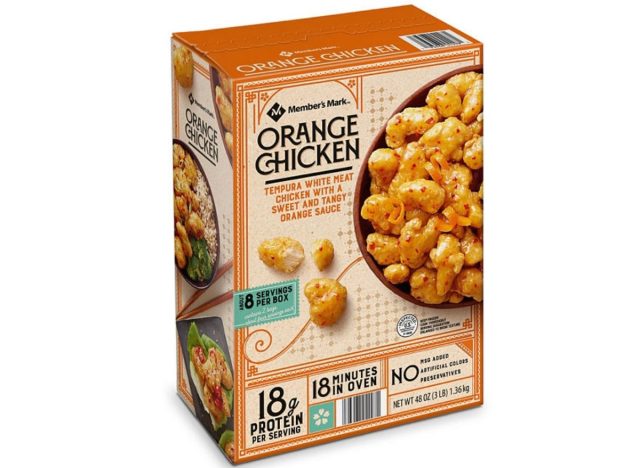

Per 1 cup: 340 calories, 11 g fat (2 g saturated fat), 730 mg sodium, 43 g carbs (2 g fiber, 18 g sugar), 18 g protein
Member’s Mark frozen tempura orange chicken contains a whopping 18 grams of sugar per 1-cup serving. That’s more sugar than a serving of some ice creams! Besides its elevated sugars, this Asian freezer meal is also quite high in sodium and saturated fat. Chun says these are red flags. “Consuming foods that are high in sodium, added sugars, and saturated fat can contribute to poor diets and ultimately lead to obesity and other chronic conditions,” she says.
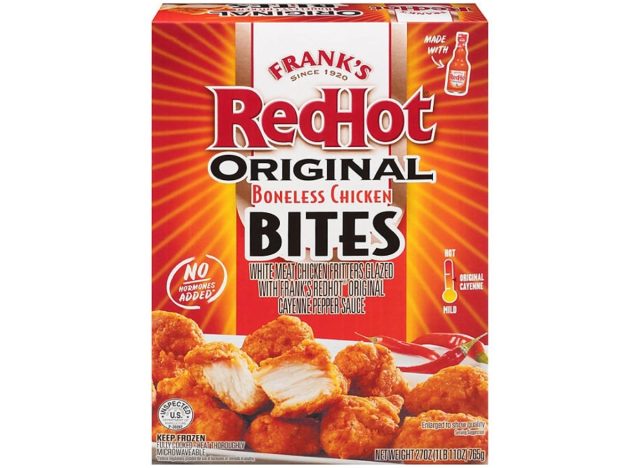

Per 3 oz serving: 150 calories, 6 g fat (1 g saturated fat), 850 mg sodium, 14 g carbs (0 g fiber, 0 g sugar), 11 g protein
If you’re craving spice, opt for something other than Frank’s Red Hot cayenne chicken bites at Sam’s Club. It’s not the heat that makes these a poor choice—it’s their epic sodium levels. “While chicken bites can be a great protein-rich snack, these ones will come at a cost for your sodium intake,” says Sauceda. “In one 3-ounce serving of these chicken bites, there is 850 milligrams of sodium, which is 35% of your daily value.”
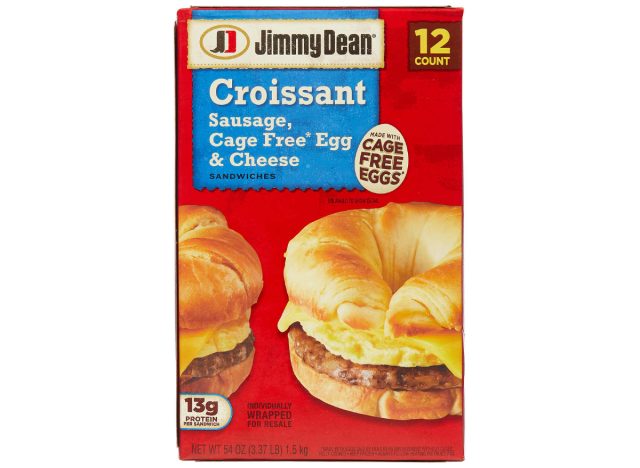

Per sandwich (128 g): 410 calories, 27 g fat (11 g saturated fat), 590 mg sodium, 28 g carbs (2 g fiber, 5 g sugar), 13 g protein
Most frozen breakfast sandwiches come with a high nutrition price tag—and Jimmy Dean’s sausage, egg, and cheese croissants are no exception. “Even though these sandwiches have protein, they are packed full of salt and fat,” says Haley Bishoff, RDN, nutrition expert and owner of Rūtsu Nutrition in Las Vegas. “One breakfast sandwich contains 590 milligrams of sodium and over half of the daily recommendation for saturated fat intake.”
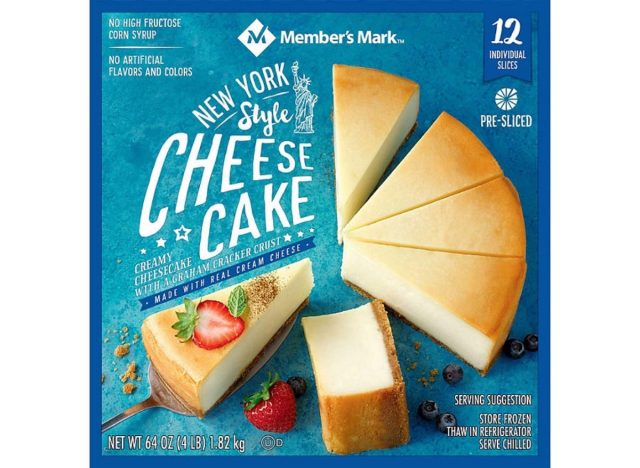

Per slice (151 grams): 530 calories, 36 g fat (21 g saturated fat), 390 mg sodium, 43 g carbs (0 g fiber, 34 g sugar), 9 g protein
It’s hard to believe one food could supply over 100% of your daily saturated fat needs, but Member’s Mark cheesecake attains this dubious feat. And when you add its immense sugar content, it’s clear this frozen dessert isn’t great for health. “This cheesecake is a big sugar rush with 31 grams of added sugar, which is almost 8 teaspoons of sugar. The cheesecake is also very calorie dense with 530 calories per slice,” Sauceda says. Make this one an every-once-in-awhile treat—or skip it entirely.






